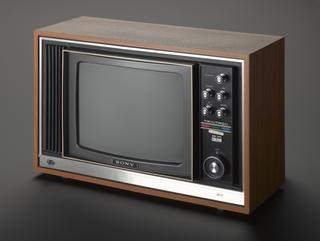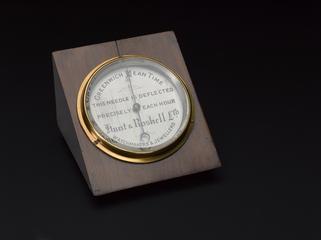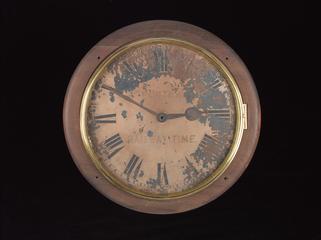






Example of the Willis world clock, with winding key (for showing local time in any part of the world), patented by John Henry Willis in 1929, made by J. H. Willis and Company, Norwich, England, 1929-1935.
Example of the Willis world clock, with winding key (for showing local time in any part of the world), patented by John Henry Willis in 1929, made by J. H. Willis and Co., Norwich, England, 1929-1935.
This clock was designed to easily show the time across the globe. The central wheel was used to show the hour. Rather than a moving hand, the dial itself rotated. The dial was also divided by radial lines, which could be used to track the hour in another country: one found the country on the out dial, and traced the line connecting it to the inner dial. A second small dial was used to show the minutes of each hour (which remain the same in each time zone). Names in red were used to indicate those countries which changed their clocks for summertime. An asterisk was used to mark when a new day began in each zone.
Details
- Category:
- Time Measurement
- Object Number:
- 1935-8
- Materials:
- wood (unidentified), glass, metal (unknown) and steel (metal)
- Measurements:
-
overall: 320 mm x 330 mm x 90 mm, 3.08kg
- type:
- clock
- copyright:
- J. H. Willis and Company
- credit:
- From J. H. Willis and Company




